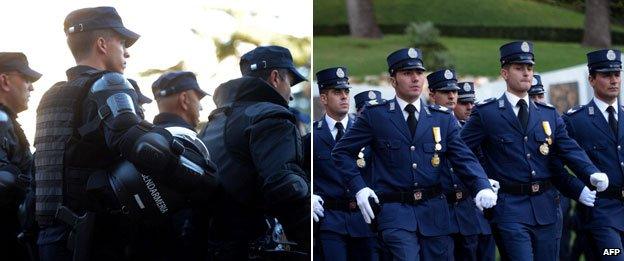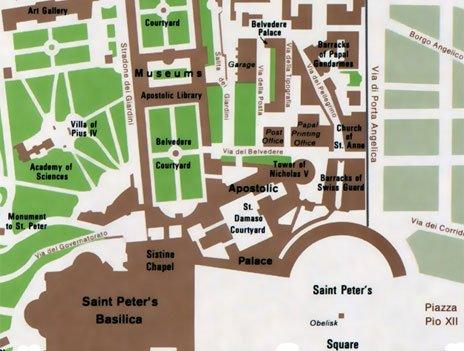Who, what, why: What's it like to be a prisoner of the Vatican?
- Published

Paolo Gabriele, Pope Benedict's former butler, begins an 18-month prison sentence today inside the Vatican walls, after being found guilty by a Vatican City court of stealing sensitive documents from the Pope's desk. What will life be like for the only prisoner inside the world's smallest sovereign state?
The Pope's former butler is being treated "leniently and justly" according to Vatican authorities, and may even benefit from a papal pardon before the end of his prison term, if he shows repentance and apologises to Pope Benedict and all the other people who work for the Holy See for the scandal he caused.
But for the moment he has exchanged his modest "grace and favour" three-bedroom apartment just inside the walls of the Vatican for a sparsely furnished detention room inside the headquarters of the Pope's private police force, the Vatican Gendarmerie.
Not only has he been sacked, but he now risks losing his home as well, situated almost next door to his former workplace, the Papal apartments on the top floor of the Apostolic Palace.
Vatican City has a railway station - with only one train a week bringing in bonded duty-free goods, a Post Office, a radio station, a pharmacy, a supermarket, a fire brigade, a five-star hotel, and one of the world's most visited museums, but it has no prison - and no dungeons.
Its only crime problem is normally to catch and prosecute the pesky thieves and pickpockets who frequently relieve pilgrims and tourists of their wallets and handbags during crowded church ceremonies inside Saint Peter's Basilica or while walking through the Vatican museums.
They are normally handed over to Italian police for processing and trial if necessary. Law and order inside the tiny territory is in the hands of the 130-strong Vatican Gendarmerie staffed almost entirely by ex-members of the Italian Carabinieri and State police. In charge is Inspector-General Domenico Giani, who formerly worked for the Italian Secret Services.
While the 120 members of the Pope's Swiss Guard carry out ceremonial and guard duties inside the mini-state, the blue-uniformed police are responsible for traffic and border control, and criminal investigations.

The gendarmes' barracks are on the Vatican's eastern edge, north of St Peter's
The Vatican police came under criticism from Paolo Gabriele during his trial. He accused them of putting him in a cramped detention cell inside police headquarters where he was held for 15 days with the light switched on day and night and with scarcely room to raise his arms.
The Gendarmerie explained that this was done to prevent Gabriele from harming himself, and that he himself had asked for the light to be left on at night and was given a sleeping mask.
The butler has now been given a larger detention cell. He will be allowed regular visits by his family - he has three children - and will receive spiritual counselling from a priest. He will also be allowed to attend Sunday mass under police escort.
The tortures inflicted on victims of the Holy Inquisition for heresy from the Middle Ages onwards are legendary. Visitors to Rome can still see some of the dungeons into which prisoners of the Church used to be thrown.
The dungeons of the Castel Sant'Angelo, a papal fortress just near the Vatican, inspired the 18th Century Italian artist Giovanni Battista Piranesi to create his famous series of imaginary etchings of Roman prisons - I Carceri.
But the Vatican Gendarmes insist that the conditions under which Gabriele will be held fully respect the Geneva Convention on torture and "conform to the detention standards applicable to other countries in analogous circumstances".
Gabriele, a Vatican citizen, has already spent five months since his arrest last May in detention or under house arrest, so in theory he has another 13 months to serve.
His case has caused huge embarrassment to the Vatican authorities and to Pope Benedict in person. They fear he might spill further secrets if he were to serve his term in an Italian prison, which under present treaty arrangements between the Holy See and Italy, he should do.
Ali Agca, the Turkish gunman who tried to assassinate Pope John Paul ll in 1981 was tried and sentenced by an Italian court after his capture in Saint Peter's Square, over which jurisdiction is shared between the Italy and the Vatican. He spent 19 years in an Italian jail before being deported to Turkey.